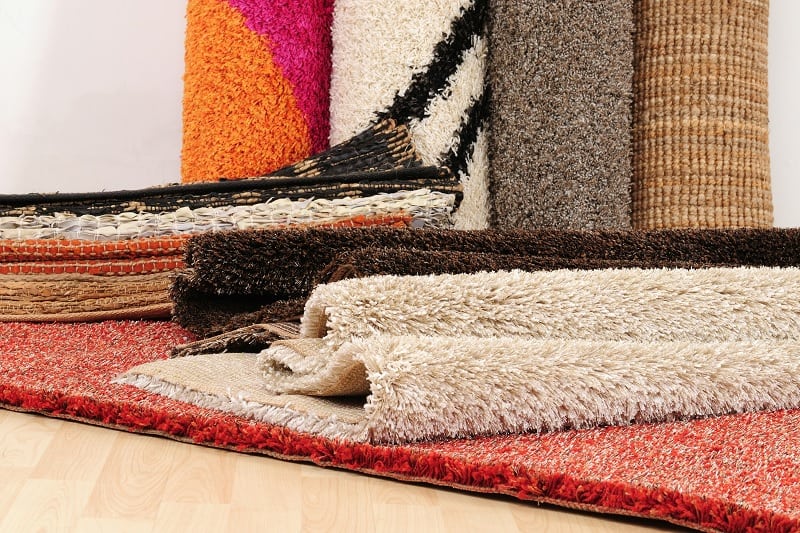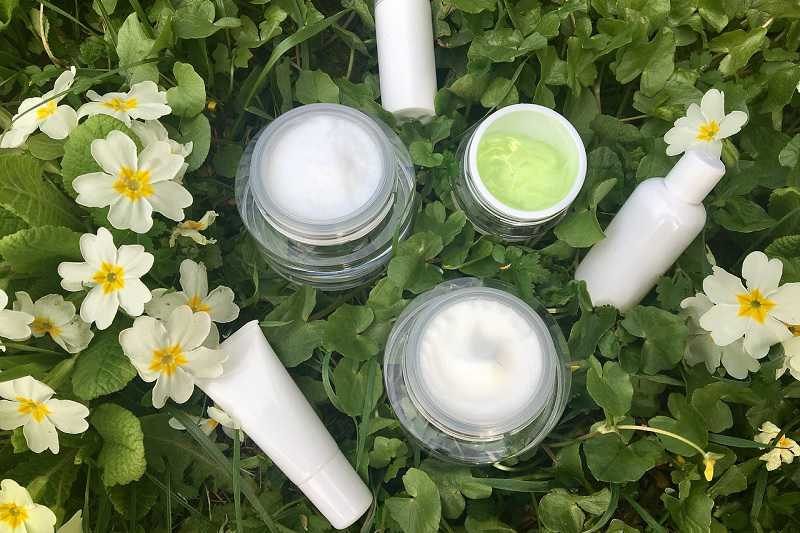Are synthetic rugs toxic? The answer might surprise you.
Synthetic rugs do indeed contain a large amount of chemicals which could be considered harmful to both humans and the environment.
Although cheaper than natural, eco-friendly rugs, the health risk these pose completely outweighs the financial savings. That’s why, if you care about the health and wellbeing of your family, you should choose a greener, non-toxic floor covering instead.
Let me explain why these synthetic rugs could be considered toxic including what they’re made from and the chemicals contain. Then I’ll round off with some tips that can help you choose the best alternative.
What are synthetic rugs made of?
Synthetic rugs are usually made from plastics such as polypropylene, polyester, acrylic, nylon, synthetic rubber and other synthetic materials.
In terms of toxicity, the worst of these is polyester as it contains high levels of potentially harmful chemicals in the materials and also the backing.
However, even many cotton and wool rugs can contain high levels of pesticides, herbicides, fungicides and other agricultural chemicals, which is why it’s so important to find a non-toxic option.
Why are synthetic rugs potentially toxic?
Synthetic rugs contain a huge range of chemicals and other harmful compounds which could affect the health of you and your entire family. This includes the following.
1. Toxic dyes
The dyes used to give synthetic rugs their fantastic colour often contain chemicals such as mercury, lead, chromium, copper, sodium chloride, toluene, benzene, alkylphenol ethoxylates, aniline and formaldehyde.
According to research conducted by Anthesis, this can harm both people working in the manufacture of these rugs and those who buy them.
2. Chemical treatments
Synthetic rugs are usually treated with a range of chemicals which protect the rug and add certain qualities. This often allows them to become flame resistant, stain resistant, water repellent and even keep bugs and bacteria way.
Although these can provide beneficial properties, they carry even bigger risks:
- Flame retardants often leech from the rug and have been lined to acute lymphoblastic leukaemia.
- Stain repellent chemicals such as PFAs are considered to be carcinogenic in the EU and can also be endocrine disruptors.
- Chemicals for water resistance are often PFCs which can lower the immunity and disrupt the endocrine system.
- Antimicrobials used to protect against mould, bacteria and fungi can be irritating to the skin and eyes and potentially harm the human reproductive system.
3. Backing
Many rugs are backed with materials to help them grip the floor and prevent slipping. However, there’s a wide range of potentially toxic chemicals use to provide them with these qualities.
This includes phthalates which can harm the reproductive system in addition to nonylphenols (NPs) and nonylphenol ethoxylates (NPEOs) which can also disrupt the endocrine system and cause the feminisation of fish.
4. Glues & VOCs
Glues and other adhesives are commonly used in the manufacture of synthetic rugs yet can also contain harmful chemicals such as formaldehyde, 4-phenylcyclohexene (4-PCH) and styrene. These release gases into your home and are the chemicals which give your carpet that ‘new carpet smell’.
Those with health conditions such as asthma, young children and babies and other sensitive people can find that these VOCs can cause nausea, headaches, dizziness and eye, nose and throat irritation.
Environmental effects
It’s not only human health that can be affected by the potentially toxic chemicals and materials used to create those synthetic rugs. Plant life and animal life can also be damaged.
When rugs are thrown away, they’ll end up in landfill where the synthetic, non-biodegradable materials will take hundred of years do break down.
As they do so, they’ll release those potentially harmful chemicals into the soil, water and air and damage or even destroy natural habitats and the animals living within them.
Are synthetic rugs safe for babies?
Considering the amount of time that babies and young children spend playing on the floor on rugs and their vulnerability to environmental toxins, it’s better to avoid synthetic rugs for your family.
The high quantities of potentially harmful chemicals in these rugs including endocrine disruptors, carcinogenic chemicals and heavy metals could pose a significant risk to their bodies. Choose a natural non-toxic rug instead.
How to find a natural, non-toxic rug
Never fear! You can still enjoy the warmth and comfort of a rug without worrying about the potentially toxic side effects. Here are a few tips that can help:
- Look for a rug made with natural materials such as organic cotton, wool, seagrass, mohair, jute and sisal
- Check that the raw materials were grown or raised without chemicals such as pesticides, herbicides and other potential nasties.
- Opt for natural finishes or select a rug dyed with natural dyes
- Avoid glues
- Find rugs with natural backings made from hemp, organic cotton or natural latex
- If you buy a rug and find that it has that ‘new rug smell’ when you get it home, return it immediately!
If in doubt, buy your non-toxic rug from a reputable company such as Safavieh who offer a range of beautiful, natural hand-woven rugs which use natural fibres such as sisal, jute, bamboo, wool, silk and seagrass.
As synthetic rugs contain a surprising amount of potentially harmful chemicals, it’s best to choose a natural, non-toxic rug instead. This will give you peace of mind that your family is safe whilst also helping to reduce the impact that your shopping choices has on the planet.g

Charlotte Witts is a writer and entrepreneur who wants to show you how easy it is to live a more conscious, zero-waste lifestyle. A confirmed yoga-addict, trail runner and ocean-lover, she currently lives in the Azores where she enjoys the simple pleasures in life.



